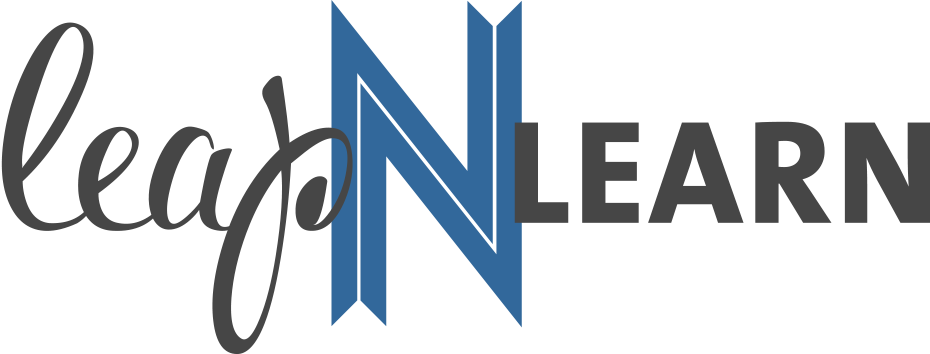Leap 'N Learn Book Club | October Discussion
When we said we wanted to start a book club with the intent to learn, we didn't realize just how much we'd learn from the first book! We suppose selecting a book that is based on a Stanford education course was a clear indicator that we'd be gaining some real knowledge. And The ABCs of How We Learn: 26 Scientifically Proven Approaches, How They Work, and When to Use Them by Daniel L. Schwartz, Jessica M. Tsang, and Kristen P. Blair delivered. Not only did we learn a lot of new ideas on how to enhance learning, but we also thought about some ideas we know and love in new ways — and all this information was presented in a way that was pretty easy to digest and really easy to put in use.
Our Review of The ABCs of How We Learn
We had to cram reading this new book since it was so popular and sold out at the beginning of the month. When our copy finally arrived, we jumped right in and instantly found it fascinating. With a chapter for each letter of the alphabet — each one representing a different core learning mechanic, finishing this book despite a busy schedule was no problem. We'd read a chapter or two whenever we had a break, and then pick right up with a new idea the next time (no having to stop in the middle of learning something and remember where we left off). The structure of each chapter is consistently laid out to help describe what the concept is, how it works, how to use it, what it's good for, the risks, good and bad examples, resources, and a cheat sheet — which made it easy to grasp and pull out ideas that we could use in the studio. Our copy has a lot of highlighted sections!
While the information is helpful for any audience with the desire to learn or help others learn, The ABCs of How We Learn is especially relevant for school teachers as the concepts translate well for use in traditional educational settings. However, even though we had to chug along past some explanations and examples that were more technical, we still gained an appreciation for each approach presented. From this book, we get insight into how we learn, which inspires more effective teaching in any setting — including the dance classroom. We found several ideas in particular as being applicable for teaching little ones and for teaching skills like ballet.
What we liked about this book is how many areas of our lives it touched upon. We learned ideas for continuing to learn ourselves, how to make the best environment for our young students and things to consider for getting them engaged, how to provide effective feedback, ways to help our older dancers, things to consider for our teacher trainings, and more! We can't wait to hear how you related to this book, the nuggets you pulled out, and how you plan to act on any ideas.
Discussion Questions
- What is your overall review of The ABCs of How We Learn? Did you like or dislike it?
- Did the book or certain ideas presented match your expectations? Anything surprise you?
- What were your favorite letters or learning mechanics? And why?
- How can you apply what you learned? For you, your teachers or your students?
- Would you recommend this book? What would you tell a friend about it?
Next Steps
If you've read the October book club selection along with us, please answer any or all of the discussion questions above in the comments below. You can also add other takeaways or questions to keep the conversation going. We'll be monitoring and moderating the discussion.
Even if you haven't read the book yet, feel free to check it out and come back here whenever you've finished. We'd still love to hear your thoughts!
We'd suggest using this book as a tool among your dance teachers. Wouldn't it be fun to have your staff read a chapter each month and then have everyone discuss it during a team meeting? Another approach could be to assign certain letters to each teacher and have them present what they learned to everyone else. The goal of either way could be to deeply understand the information (maybe even exploring some of the additional resources!) and apply it to classes. Imagine how your dance program would grow to be more education-based and successful!
Finally, a brilliant part of The ABCs of How We Learn is how easy it is to go back to and reference over time (we really appreciate this since we didn't get to read it as slowly and carefully as we'd have liked). The cheat sheets at the end of each chapter give a nice summary to help remember what an idea is and how to use it, or to jump to if you don't have time to read the book from cover to cover. And even more useful is the "Problem-Focused Index" at the back of the book. You can go there to see what chapters address a problem you may be facing — e.g., if a dancer has low confidence, go to chapters B and Y for help! Pretty neat, huh?


